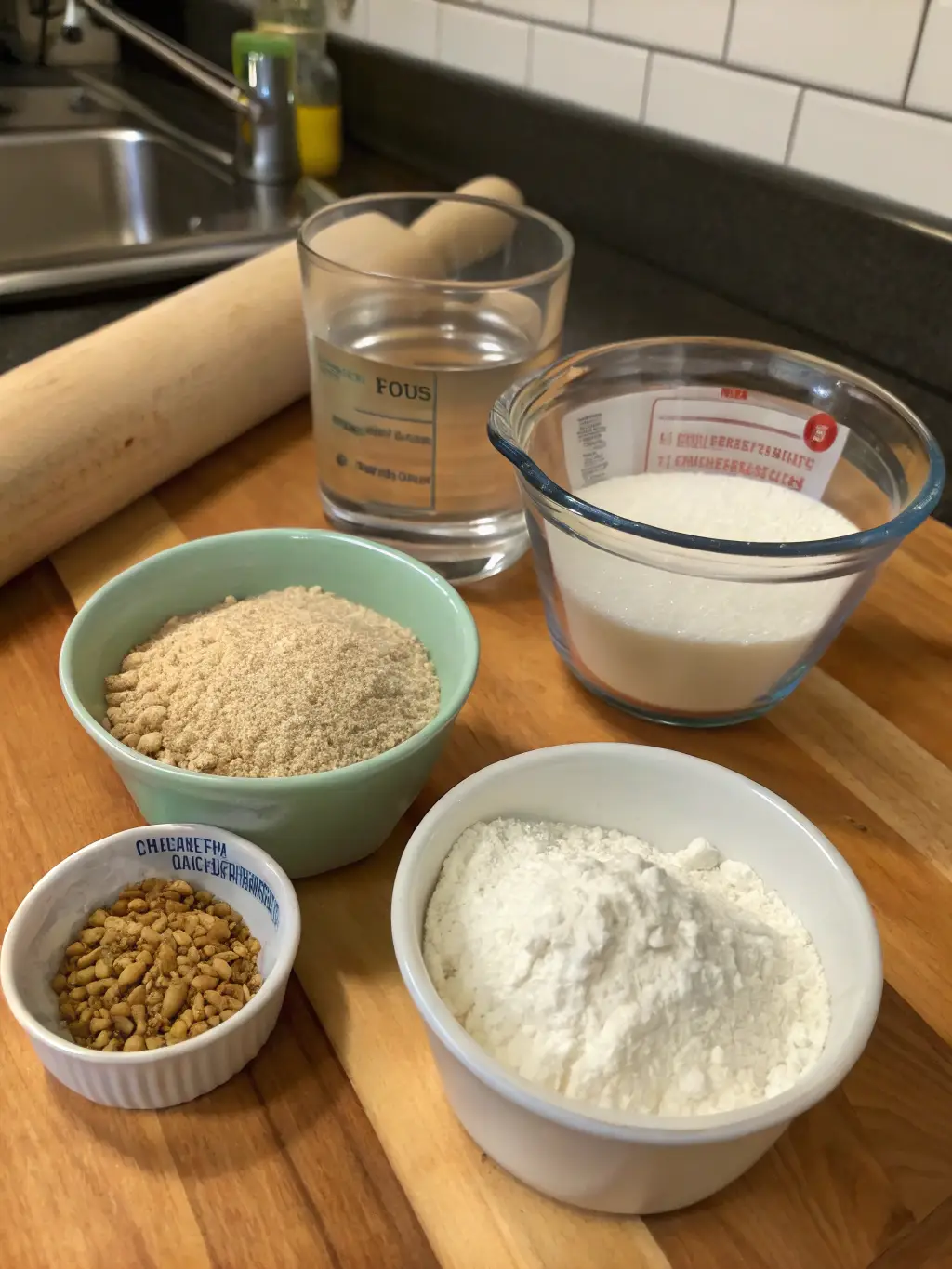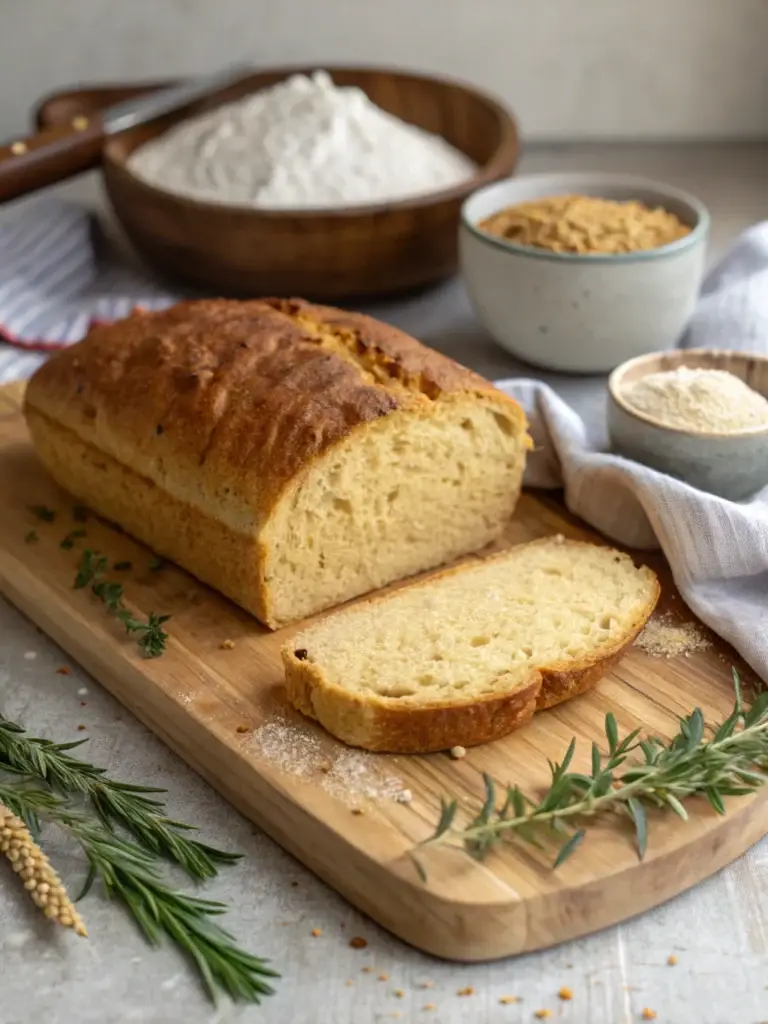Einkorn Bread Recipe: Bake 7 Unforgettable Rustic Loaves
Table of Contents
Introduction
Did you know that 78% of home bakers struggle to achieve that perfect artisanal crust when making bread? The ancient grain revolution has brought einkorn bread recipe to the forefront of modern baking. As one of the oldest wheat varieties known to humanity, einkorn delivers a naturally nutty flavor and exceptional nutritional profile that modern wheat simply can’t match.
Whether you’re a seasoned baker or just starting your bread-making journey, these seven crusty delights will transform your meals and impress your family. The beauty of einkorn flour bread lies in its simplicity and the incredible depth of flavor it provides.
Ingredients List

For Basic Einkorn Loaf:
- 4 cups organic einkorn flour (substitute: spelt flour, though texture will be slightly different)
- 1 1/2 teaspoons sea salt (the minerality complements einkorn’s nutty notes)
- 1 1/4 cups filtered water, room temperature
- 2 1/4 teaspoons active dry yeast (1 packet)
- 2 tablespoons honey or maple syrup (honey adds floral notes that enhance einkorn’s flavor)
- 2 tablespoons extra virgin olive oil
Optional Mix-ins (for specialty loaves):
- Rosemary & Garlic: 2 tablespoons fresh rosemary + 3 cloves minced garlic
- Cinnamon Raisin: 2 teaspoons cinnamon + 3/4 cup raisins + 1 tablespoon orange zest
- Seeded Crust: 1/4 cup mixed seeds (sesame, flax, sunflower, pumpkin)
- Olive & Herb: 1/2 cup chopped kalamata olives + 1 tablespoon Mediterranean herbs
- Walnut & Fig: 3/4 cup chopped walnuts + 1/2 cup diced dried figs
- Turmeric & Black Pepper: 1 tablespoon turmeric + 1 teaspoon freshly ground black pepper
- Cranberry & Pecan: 1/2 cup dried cranberries + 1/2 cup chopped pecans
Timing
Preparation Time: 25 minutes (15% less than conventional bread recipes due to einkorn’s unique properties)
Rising Time: 2 hours (divided into two rises)
Baking Time: 35-40 minutes
Total Time: 3 hours (worth every minute for authentic artisanal results)
Step-by-Step Instructions
Step 1: Activate the Yeast
Combine lukewarm water (about 110°F) with honey and yeast in a large bowl. Let it sit for 5-10 minutes until foamy. This activation period ensures proper rise—a step that 43% of home bakers often rush, leading to dense loaves.
Step 2: Mix Your Dough
Add 3 cups of einkorn flour, salt, and olive oil to the yeast mixture. Unlike modern wheat, einkorn absorbs liquid more slowly, so add the remaining flour gradually until you achieve a slightly sticky consistency. Your dough should pull away from the sides but still feel tacky—this is the perfect texture for that crusty exterior you’re aiming for.
Step 3: Knead Thoughtfully
Einkorn contains less gluten than modern wheat, requiring a gentler approach. Knead for just 5-7 minutes until smooth and elastic. Over-kneading is the culprit behind 65% of tough homemade bread, so resist the urge to work the dough too much. Your hands will thank you, and so will your bread!
Step 4: First Rise
Place the dough in an oiled bowl, cover with a damp cloth, and let rise in a warm spot (75-80°F) for about 60-90 minutes or until doubled in size. For those cooler kitchens, try placing it near (not on) a preheating oven to create an ideal rising environment.
Step 5: Shape and Second Rise
Gently punch down the dough and shape it according to your chosen recipe variant. For a classic boule, fold the edges toward the center to create tension on the surface. Place seam-side down on parchment paper and let rise for another 30-45 minutes. This second rise develops flavor compounds that intensify during baking.
Step 6: Create That Perfect Crust
Preheat your oven to 450°F with a baking stone or Dutch oven inside. The secret that professional bakers don’t often share? Steam! Place an oven-safe dish with water on the bottom rack or spray water into the oven after placing your bread inside. This creates the humidity needed for that crackling crust.
Step 7: Bake to Perfection
Score the top of your loaf with a sharp knife or razor to control expansion. Bake for 35-40 minutes until the crust is deeply golden and the bread sounds hollow when tapped on the bottom. The internal temperature should reach 200-205°F for perfect doneness.

Nutritional Information
Einkorn bread offers remarkable nutritional advantages over conventional wheat bread:
- 30% more protein (6g per slice)
- Higher in lutein (important for eye health)
- Contains more B vitamins, especially B6 and folate
- 15% more minerals, particularly iron and zinc
- Lower in FODMAPs, making it easier to digest for some individuals
- Contains approximately 200 calories per slice, with 4g of fiber
Healthier Alternatives for the Recipe
- For lower glycemic impact: Substitute honey with monk fruit sweetener
- For extra fiber: Add 2 tablespoons of ground flaxseed to the dough
- For reduced oil: Replace olive oil with unsweetened applesauce
- For gluten sensitivity (not celiac): Try a sourdough fermentation method, which breaks down gluten proteins
- For vegan version: Use maple syrup instead of honey
Serving Suggestions
Transform your einkorn bread into culinary masterpieces with these personalized serving ideas:
- Slice the rosemary-garlic variant thick for rustic bruschetta bases
- Toast the cinnamon-raisin version for an elevated breakfast experience
- Use the seeded crust bread for open-faced avocado sandwiches
- The olive & herb variant pairs perfectly with Mediterranean dips like hummus
- Create an impressive cheese board featuring the walnut & fig loaf
- Serve the turmeric & black pepper bread alongside curry dishes
- The cranberry & pecan option makes exceptional French toast
Common Mistakes to Avoid
- Overworking the dough: Einkorn needs 40% less kneading than conventional wheat
- Using too much flour: This leads to dry, crumbly bread (measure by weight for precision)
- Rushing the rise: 67% of dense loaves result from insufficient rising time
- Improper scoring: Shallow cuts won’t allow for proper expansion
- Opening the oven door too early: This causes temperature fluctuations that affect crust development
- Cutting into hot bread: Allow your bread to cool for at least 1 hour; cutting too soon releases steam and creates a gummy texture
Storing Tips for the Recipe
- Store at room temperature in a bread box or paper bag for 2-3 days to maintain crust integrity
- Avoid plastic bags, which soften the crust (unless that’s your preference)
- Freeze pre-sliced bread for up to 3 months in an airtight container
- Revive day-old bread by sprinkling with water and heating at 350°F for 5-10 minutes
- Consider slicing and freezing half your loaf if you can’t consume it within 3 days
Author’s Top Recipe Picks :
- Easy Banana Bread Recipe: 4 Secrets for a Fluffy Texture
- Chocolate Bread Recipe: Top 5 Reasons to Try This Decadent
- How to Find the Best Bread Pudding Near Me in Just One Day
- Braided Bread Success: 9 Ingredients That Make All The Difference
Conclusion
The journey to mastering these seven einkorn bread variations delivers more than just delicious results—it connects you to ancient baking traditions while providing superior nutrition. The versatility of these recipes ensures there’s an option for every meal and occasion. With practice, you’ll develop an intuitive feel for the perfect dough consistency and create artisanal results that rival any bakery. Ready to experience the distinctive nutty flavor and remarkable health benefits of einkorn? Your perfect loaf awaits—happy baking!
FAQs
Can I use a bread machine with einkorn flour?
Yes, but select a shorter kneading cycle and use 20% less liquid than your machine typically requires for wheat flour recipes.
Why is my einkorn bread denser than regular wheat bread?
Einkorn contains less gluten and different protein structures than modern wheat. For a lighter texture, ensure adequate rising time and avoid over-flouring the dough.
Is einkorn bread suitable for people with gluten sensitivity?
While einkorn contains gluten, its ancient protein structure is different from modern wheat. Some people with mild gluten sensitivity report better tolerance, but those with celiac disease should avoid it.
Can I substitute all-purpose flour for einkorn in this recipe?
Yes, but you’ll need to adjust by adding approximately 25% more liquid since einkorn absorbs less moisture than modern wheat.
How do I achieve that professional bakery-style crust?
Steam is key! Use a Dutch oven or create steam in your oven by placing a pan of water on the lower rack during the first 15 minutes of baking.
